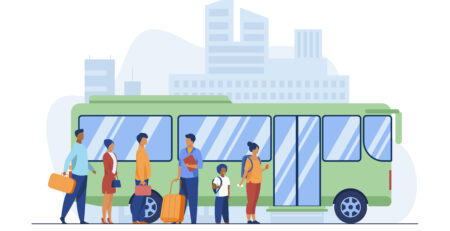The Economics of Shared Mobility Services
Shared mobility services have become increasingly popular in urban areas around the world. These services, which include ridesharing, bike sharing, and scooter sharing, offer numerous economic benefits for both users and cities. In this article, we will explore the economic advantages of shared mobility services and discuss their impact on urban economies.
The Economic Benefits of Shared Mobility Services
Shared mobility services provide numerous economic benefits to individuals and communities. Firstly, they offer a cost-effective alternative to traditional modes of transportation. By utilizing shared mobility services, individuals can save money on fuel, parking fees, and car maintenance expenses. This can have a significant impact on household budgets, especially for those living in urban areas where car ownership can be expensive.
Secondly, shared mobility services have the potential to reduce traffic congestion in cities. By encouraging people to share rides or use alternative modes of transportation, these services help decrease the number of private vehicles on the road. This, in turn, leads to less congestion, shorter travel times, and improved productivity for individuals and businesses. According to a study by the Shared-Use Mobility Center, ridesharing alone has the potential to reduce the number of vehicles on the road by up to 13 million.
Lastly, shared mobility services contribute to environmental sustainability. By promoting shared rides and alternative modes of transportation such as bikes and scooters, these services help reduce greenhouse gas emissions and air pollution. This has a positive impact on public health and can result in cost savings related to healthcare expenses. Additionally, the promotion of electric vehicles within shared mobility services further contributes to the reduction of carbon emissions.
The Impact of Shared Mobility on Urban Economies
The adoption of shared mobility services has a significant impact on urban economies. Firstly, it stimulates job creation. Shared mobility platforms require a workforce to manage operations, maintain vehicles, and provide customer support. These job opportunities can range from drivers and mechanics to data analysts and customer service representatives. The growth of shared mobility services can lead to the creation of new employment opportunities, particularly in cities where these services are in high demand.
Secondly, shared mobility services can boost local businesses. By providing individuals with convenient transportation options, these services increase accessibility to shops, restaurants, and entertainment venues. This can attract more customers to local businesses, leading to increased sales and revenue. Additionally, shared mobility services can support tourism by offering visitors an efficient and affordable way to explore a city, leading to increased spending in the local economy.
Furthermore, the adoption of shared mobility services can lead to reduced infrastructure costs for cities. As the demand for private vehicle ownership decreases, cities can allocate resources towards the development of alternative transportation infrastructure. This includes the improvement of public transit systems, the creation of dedicated bike lanes, and the implementation of smart mobility solutions. These investments not only enhance the efficiency of urban transportation but also contribute to the attractiveness of cities for residents, businesses, and tourists.
Shared mobility services offer a multitude of economic benefits for individuals, communities, and cities. They provide cost savings for users, reduce traffic congestion, contribute to environmental sustainability, stimulate job creation, boost local businesses, and reduce infrastructure costs. As urban populations continue to grow, the adoption of shared mobility services becomes increasingly important in ensuring efficient and sustainable urban transportation. By embracing these services, cities can create more inclusive, accessible, and economically vibrant environments for their residents.










